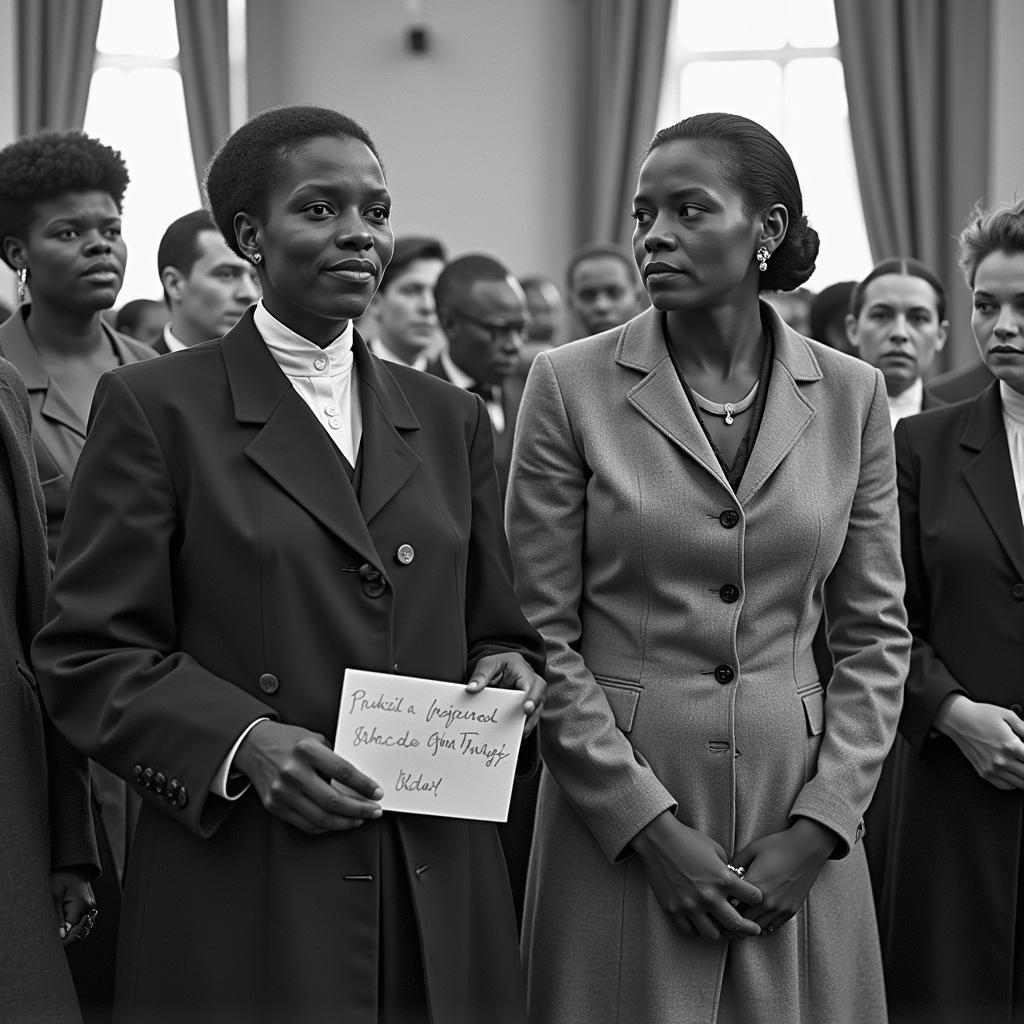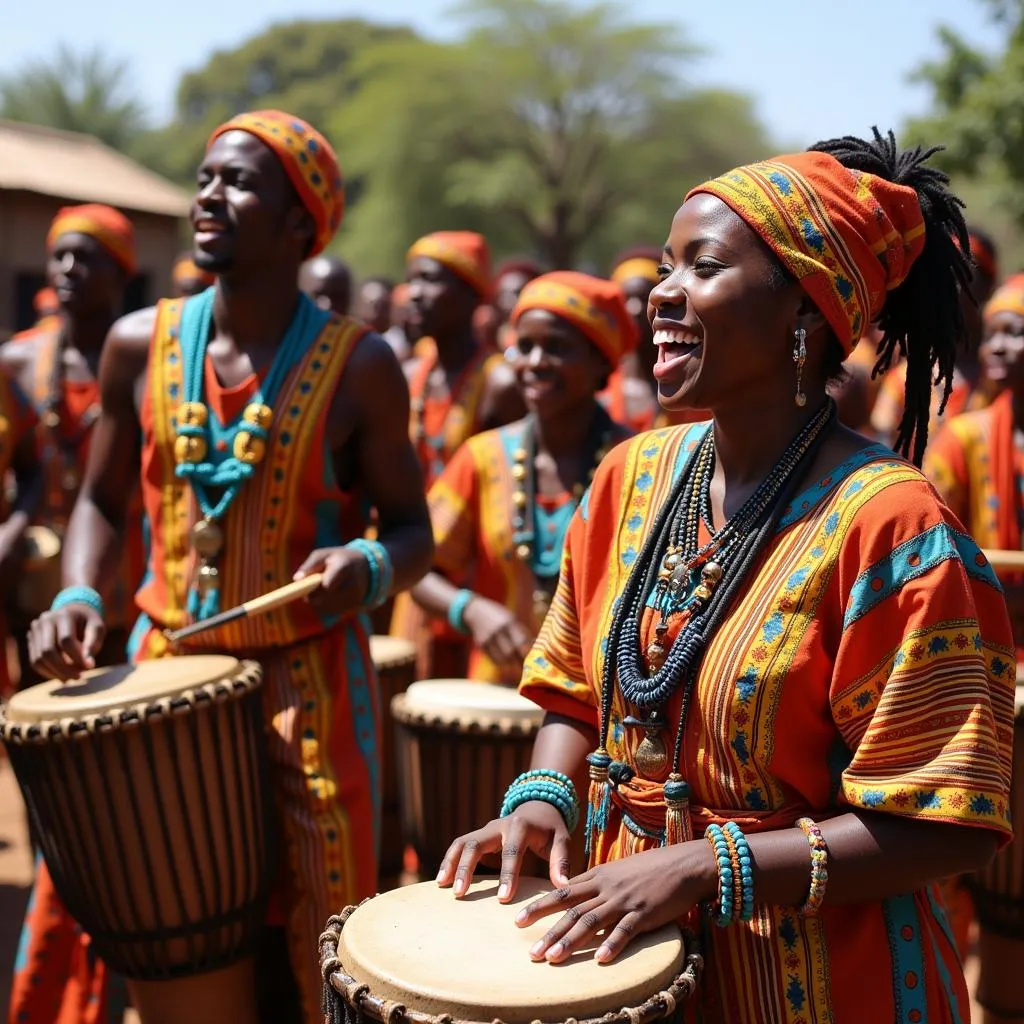Exploring the Vibrant World of South African Painters
South African Painters, with their vivid colors and evocative themes, offer a unique window into the soul of a nation. From the sweeping landscapes to the intimate portraits, their art reflects the country’s rich history, diverse cultures, and complex social fabric.
A Legacy Woven in Color: Historical Influences on South African Painters
To understand the depth and diversity of South African painting, one must delve into the historical tapestry that has shaped its artistic landscape.
Early Rock Art: Echoes of Ancient Narratives
Long before the arrival of European settlers, indigenous communities were creating intricate rock art, narrating stories of their lives, beliefs, and connection to the land. These early artistic expressions, found throughout Southern Africa, provide a glimpse into the rich visual language that would later influence generations of artists.
Colonial Encounters and the Rise of Western Aesthetics
The arrival of European colonists in the 17th century brought with it new artistic conventions and styles. Portraiture, landscape painting, and historical scenes, often reflecting a European perspective, became prevalent. Yet, even within these imposed structures, South African artists began to emerge, capturing the unique light, colors, and textures of their homeland.
The Impact of Apartheid: Art as Resistance and Reflection
The 20th century saw the rise and fall of apartheid, a period of enforced segregation and discrimination that deeply impacted every aspect of South African Life, including art. During this time, many artists used their work as a powerful tool for resistance, exposing the injustices of the regime and giving a voice to the oppressed. Others explored themes of identity, belonging, and the human condition in the face of adversity.
Key Movements and Styles in South African Painting
From the social realism of the apartheid era to the contemporary explorations of identity and globalization, South African art has witnessed a dynamic evolution of styles and movements.
The Rise of Social Realism
During the mid-20th century, social realism emerged as a dominant force in South African art. Artists like Gerard Sekoto and George Pemba used their canvases to depict the realities of life under apartheid, portraying the struggles and resilience of ordinary people. Their work, characterized by a strong sense of social commentary, played a crucial role in raising awareness about the injustices faced by black South Africans.
The Influence of African American Modernism
Across the Atlantic, the Harlem Renaissance and the rise of African American modernism resonated with South African artists, inspiring a new generation to explore themes of identity, heritage, and cultural pride. Artists like Ernest Mancoba and Gavin Jantjes incorporated elements of African aesthetics into their work, challenging Western artistic norms and forging a distinct visual language that celebrated their African roots.
Contemporary Voices: Exploring New Frontiers
In the post-apartheid era, South African art has continued to flourish, embracing a wide range of styles and themes. From the surreal landscapes of William Kentridge to the intricate beadwork of Mary Sibande, contemporary South African artists are pushing boundaries, challenging conventions, and captivating audiences worldwide with their unique perspectives and artistic innovations.
Prominent South African Painters: A Tapestry of Talent
South Africa boasts a constellation of talented painters, each contributing their unique voice to the country’s vibrant art scene. Here are a few notable figures:
-
Gerard Sekoto: A pioneer of social realism, Sekoto’s paintings captured the daily lives of black South Africans during apartheid, often portraying scenes of music, dance, and community.
-
Irma Stern: Known for her bold use of color and expressive brushstrokes, Stern’s portraits and still lifes often featured subjects from the diverse cultural groups of South Africa.
-
George Pemba: A self-taught artist, Pemba’s work often depicted the lives of ordinary people in the Eastern Cape, reflecting his deep connection to his Xhosa heritage.
-
William Kentridge: An internationally acclaimed artist, Kentridge is known for his charcoal drawings, animated films, and theatrical productions, often exploring themes of history, memory, and the human condition.
-
Mary Sibande: Sibande’s work often features life-size sculptures and installations made with intricate beadwork, exploring themes of identity, gender, and the legacy of colonialism.
South African Painters: A Global Legacy
The art of South African painters transcends geographical boundaries, offering a powerful testament to the resilience of the human spirit and the transformative power of art. By exploring the works of these talented individuals, we gain a deeper understanding of South Africa’s complex history, vibrant culture, and the enduring power of art to inspire, challenge, and provoke dialogue.

